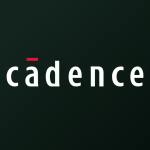Welcome to our dedicated page for Cadence Design System news (Ticker: CDNS), a resource for investors and traders seeking the latest updates and insights on Cadence Design System stock.
Cadence Design Systems Inc (CDNS) provides critical electronic design automation (EDA) software and semiconductor intellectual property solutions powering modern chip development. This news hub offers investors and industry professionals centralized access to official announcements and market-relevant updates.
Track earnings reports, product launches, and strategic partnerships shaping the EDA landscape. Our curated collection ensures timely access to developments impacting semiconductor design innovation across automotive, AI hardware, and IoT sectors.
Discover how Cadence's tools in digital verification, custom IP blocks, and system-level integration address evolving industry challenges. Bookmark this page for streamlined monitoring of operational milestones and technology advancements directly from the source.


